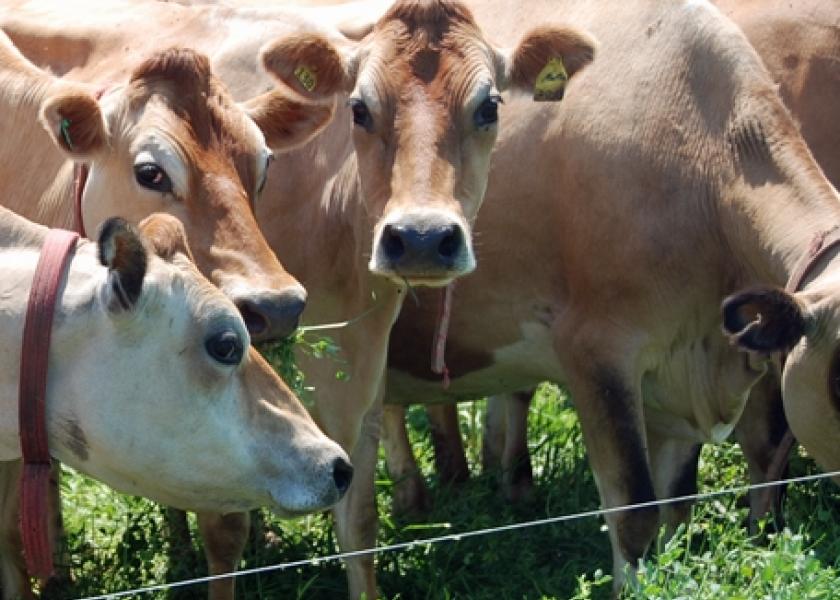Bovine Leukemia Virus Control

Do your cows have bovine leukemia? Recent statistics indicate 44% of dairy cattle and 10% of beef cattle carry the virus.
By: Lew Strickland, Extension Veterinarian, University of Tennessee
Bovine Leukemia Virus
Bovine leucosis is caused by a retrovirus and is spread through the transfer of blood and/or blood
products from an infected to a susceptible animal. The prevalence of BLV is high in the US. The
most recent surveys in the U.S. estimate that 44% of dairy and 10% of beef cattle are infected
with the virus. In general, the prevalence of viral infection increases with age, with clinical signs
appearing at 5-6 years of age.
Clinical Signs
Approximately 5% of BLV-infected cattle develop lymphosarcoma. The clinical signs associated
with lymphosarcoma are related to tumor location in the cow’s body. Cows with BLV-associated
lymphosarcoma commonly show swelling in the regions of the lymph nodes. Tumors of the
abomasum may lead to signs of cranial abdominal pain, melena (digested blood in feces), or
abomasal outflow obstruction. Pelvic limb paresis progressing to paralysis can occur in animals
with spinal lesions. Tumors in the eye socket cause protrusion of the globe, resulting in exposure
keratitis. Tumors of the heart may be mild and undetectable clinically, or may cause arrhythmias,
murmurs, or heart failure. Uterine lesions may lead to reproductive failure or abortion.
Transmission
Many common farm practices have been implicated in viral transmission, including tattooing,
dehorning, rectal palpation, injections, and blood collection. Vectors such as tabanids and other
large biting flies also may transmit the virus. An infected Dam has the potential to transmit BLV
directly to her fetus, either by contact with infected blood, or postpartum from the dam to the calf
through ingestion of infected colostrum. Any material that is blood contaminated or lymphocyte
rich has the potential to infect animals with BLV.
Diagnosis
Positive animals can be identified with a simple blood test performed at any Tennessee
diagnostic lab.
Treatment/ Control
There are no treatments or vaccines available for BLV. Management and prevention is key in
control of this disease. Here are some methods for prevention and control:
- Test all cattle entering the herd for BLV, and isolate them for 30 to 60 days. Test again at the end of the isolation period
- Implement annual testing
- If your herd is infected with BLV, maintain 2 herds; clean and infected.
- Perform all veterinary procedures on BLV-positive cows last
- Use individual sterile needles for transdermal injection or blood collection.
- Visit http://www.safeneedledisposal.org to learn how to properly dispose of used sharps
- Disinfect all equipment between animals.
- Wash and rinse instruments in warm water, then submerge in an appropriate disinfectant.
- Use electric dehorners, or disinfect dehorning equipment between animals.
- Replace examination gloves and sleeves between animals.
- Use milk replacer to feed preweaned calves.
- Heat-treat or pasteurize colostrum.
- 140º for 30 minutes will kill BLV without damaging IgG antibodies
- Use BLV-seronegative recipients for embryo transfer.
- Reduce numbers of biting insects
Work with your local Veterinarian and/or Extension Agent to develop a control program for your
herd







